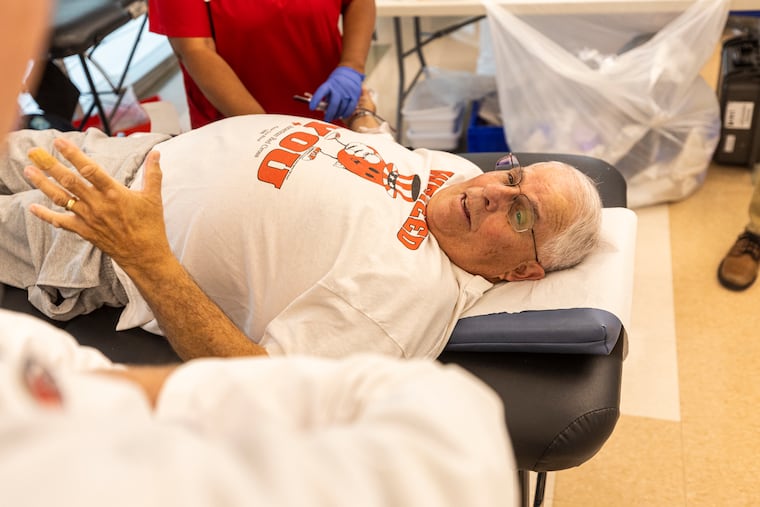Marc Satalof donated 35 gallons of blood in more than 50 years. At 76, the Montco retiree just rolled up his sleeve for the last time.
A longtime Philly schoolteacher, he jokes that his blood type is A-plus.

A longtime Philly schoolteacher, he jokes that his blood type is A-plus.
